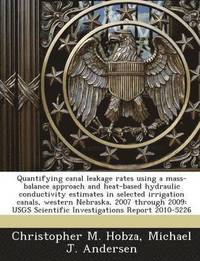The water supply in areas of the North Platte River Basin in the Nebraska Panhandle has been designated as fully appropriated or overappropriated by the Nebraska Department of Natural Resources (NDNR). Enacted legislation (Legislative Bill 962) requires the North Platte Natural Resources District (NPNRD) and the NDNR to develop an Integrated Management Plan (IMP) to balance groundwater and surface-water supply and demand in the NPNRD. A clear understanding of the groundwater and surface-water systems is critical for the development of a successful IMP. The primary source of groundwater recharge in parts of the NPNRD is from irrigation canal leakage. Because canal leakage constitutes a large part of the hydrologic budget, spatially distributing canal leakage to the groundwater system is important to any management strategy. Surface geophysical data collected along selected reaches of irrigation canals has allowed for the spatial distribution of leakage on a relative basis; however, the actual magnitude of leakage remains poorly defined. To address this need, the U.S. Geological Survey, in cooperation with the NPNRD, established streamflow-gaging stations at upstream and downstream ends from two selected canal reaches to allow a mass-balance approach to be used to calculate daily leakage rates. Water-level and sediment temperature data were collected and simulated at three temperature monitoring sites to allow the use of heat as a tracer to estimate the hydraulic conductivity of canal bed sediment. Canal-leakage rates were estimated by applying Darcy's Law to modeled vertical hydraulic conductivity and either the estimated or measured hydraulic gradient. This approach will improve the understanding of the spatial and temporal variability of canal leakage in varying geologic settings identified in capacitively coupled resistivity surveys.

